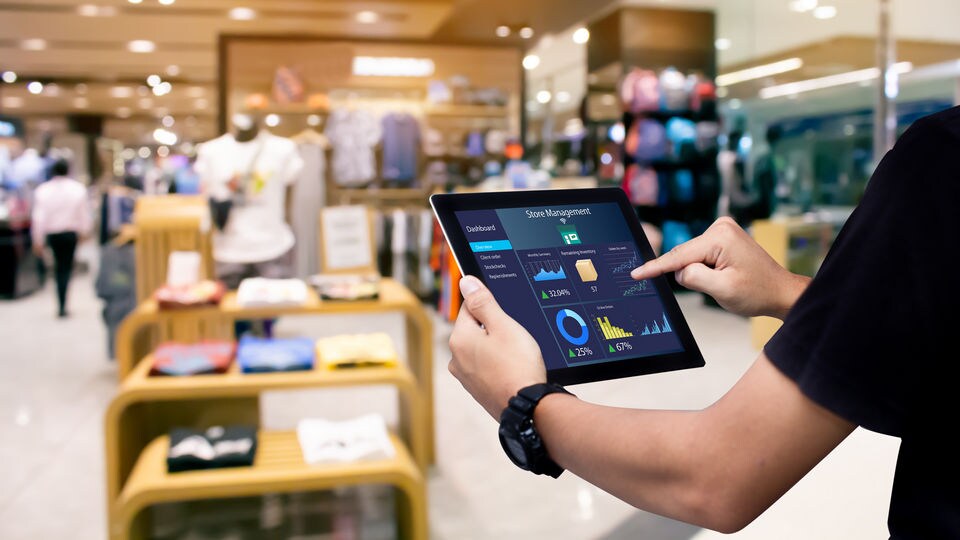Article
4 Ways to Make Inventory Management Easier

Supply chain issues and labor shortages are hampering the industry across the globe, but retailers can work to mitigate these challenges and subsequent revenue risks by utilizing smart inventory practices that keep pace with shifting shopper tendencies.
If shipping delays, clogged ports, and labor shortages are hindering your retail operations, you're not alone. The National Retail Federation (NRF) reports that 98% of retailers have been impacted by shipping and port delays, and some industry analysts expect that disruption to last well into 2022. Meanwhile, shoppers crave speed and convenience more than ever and are increasingly unwilling to tolerate stockouts.
Let's not forget the labor shortage. The Bureau of Labor Statistics shows more than a million open retail jobs in the U.S. at present. And recent data show retail workers have the fifth highest quit rate in the country. In fact, 678,000 retail workers quit their jobs in July of 2021 alone — and, as Forbes recently noted, this shortage isn’t expected to improve anytime soon.
The challenges are real, but they're not insurmountable. There are steps you can take today to minimize their impact year-round. Here's how.
Accept that shoppers' behaviors have changed
Last year was understandably marked by lower foot traffic than usual due to the pandemic and associated safety protocols. But this year, as vaccination rates continue to rise in many cities and regions across the globe, consumers are expected to venture out and do more shopping on foot rather than online. But retailers should be aware that being back in physical stores doesn't necessarily mean back to shopping as usual.
A Sensormatic Solutions study found consumers have actually started shopping more purposefully. Namely, they visit stores less frequently, but purchase substantially more each visit. In the U.K., for example, we found shoppers buy, on average, 31% more by every store visit.
The takeaway for retailers? Once they're in your store, you should consider having the products they're looking for — because they're not coming back for a while. With change, however, comes opportunity: Leverage these new shopping norms with a sound inventory strategy.
Update your inventory processes and systems
Having "frozen" or "phantom" inventory risks disappointing shoppers. That's because an inventory system based on sales can be notoriously inaccurate, and that inaccuracy may prove disastrous for a shopping public that's widely adopted buy online, pick up in store (BOPIS)/ buy online, pick up at curbside (BOPAC). To be sure, a staggering 83% of shoppers say that convenience is more important than it was five years ago.
With such a high premium on convenience, you can imagine how a customer will feel if they've purchased something online, only to discover it's not in stock when they arrive to pick it up. (Not to mention the residual impact this customer experience can have on future business.)
So what's the alternative?
One option is an RFID-powered solution that delivers inventory visibility from supply chain to storefront — and everywhere in between. With RFID-enabled, item-level inventory tracking, you can know precisely which items are in stock in any given store at any given moment. This allows retailers to:
- Maximize inventory investment across the entire enterprise by ensuring every last unit is sold
- Reduce stockouts and markdowns
- Execute omnichannel fulfillment profitably
- Deliver stellar customer experiences
- Gain visibility into the supply chain
Protect your inventory with updated RFID systems
One unfortunate retail trend is an increase in theft. To be sure, a recent shrinkage report from the National Retail Federation (NRF) found that 57% of U.S. retailers said organized retail crime (ORC) had increased as a result of COVID-19, while another 50% said the same about shoplifting. Employee, e-commerce, and returns fraud, meanwhile, is expected to increase as economic pressures put greater strain on workers' finances. Add crowded stores full of shoppers during important busy seasons and sales events to that mix — which make it easier for retail criminals to strike — and the stage is set for prime time for shoplifting and organized retail crime.
So if you've implemented RFID-enabled inventory tracking, why not use that same technology to amplify your loss prevention efforts? A mammoth amount of effort goes into getting the right inventory to the right stores at the right time. It pays to protect that inventory with the latest technology. Just be sure to order enough merchandise protection for your high value and most vulnerable products in advance — especially during your peak busy seasons like back-to-school time and holidays. No matter what your most stolen items are, there are tags, labels, wraps, alarms, and more that can easily accommodate and protect them.
Get more guidance from a partner you can trust
Don't go it alone. Download the Sensormatic Solutions Inventory Checklist today. It's a step-by-step guide filled with actionable insights and advice from our inventory leaders that can be put into practice immediately.
Explore Related Topics

